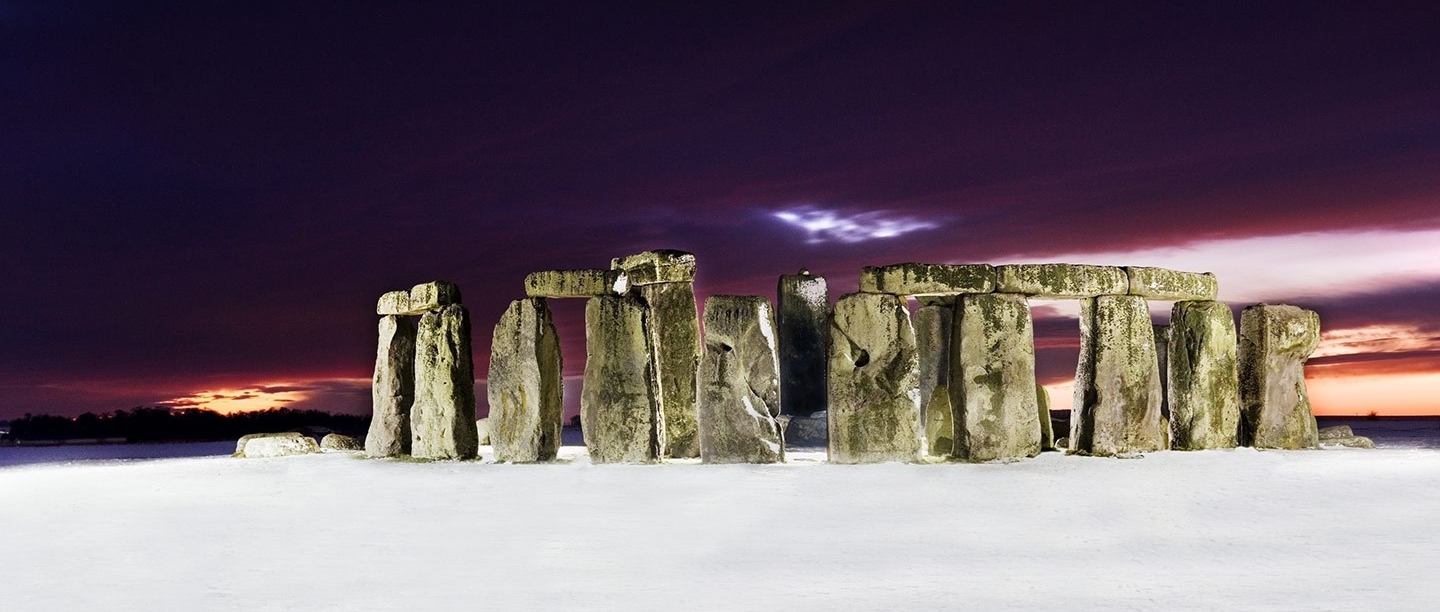Cattle herding in the Stonehenge landscape, c.3700 BC
In the early Neolithic period, this area was largely open grassland and was used by people grazing their cattle herds. There was a mosaic of trees and shrubs, but the area was reasonably open compared with other parts of southern England. People probably moved seasonally between different settlements and grazing areas.
1. Landscape
Our information about the appearance of the prehistoric landscape comes from three sources: preserved pollen, wood charcoal and land snail shells (different species prefer to live in different types of environment).
Snails from the ditches of the Stonehenge and Lesser Cursus, built in about 3500 BC, show that these monuments were surrounded by open chalk grassland. However, there were certainly some trees in the wider area, as hazel, maple, ash and elm charcoal was recovered from under the bank at Robin Hood's Ball causewayed enclosure.
2. Children
It is difficult to use the archaeological record to find out about children, particularly in the Neolithic period. Based on comparisons with modern populations, it is likely that between one fifth and one half of all deaths occurred at less than 16 years of age. Despite this, very few skeletal remains of children have been found in the Stonehenge area. This may be because infant bones are less likely to survive, and were not collected in older excavations, or that children were less often selected for formal burial than adults.
3. Dog
The earliest known remains of domestic dogs in Britain are from Star Carr in North Yorkshire, dating from the Mesolithic period. They were probably kept by people throughout the Neolithic and early Bronze Age periods. Dog bones have been recovered from the ditch at Stonehenge, and from the henge sites of Coneybury and Durrington Walls. The bones suggest that dogs at this time were between 37 and 62cm tall at the shoulder. They were probably kept as hunting animals, and to assist with herding and protecting livestock.
4. Clothing
We know very little about the clothes worn by people during the early Neolithic period in Britain, since no actual garments have survived. Animal skins, furs and hides were certainly used, as suggested by discoveries of bone awls (to pierce holes) and scrapers (to scrape fat from hides). The earliest evidence for a textile from Britain is in the form of an imprint on the surface of a piece of Neolithic Impressed Ware pottery from Flint Howe, Scotland. A piece of linen thread was discovered at Etton in Cambridgeshire in an early Neolithic ditch.
5. Cattle
Domestic cattle were introduced into Britain from Europe at the beginning of the Neolithic period. The earliest cattle bone from the Stonehenge landscape, dating to 3950-3790 BC, was found in the Coneybury Anomaly, a feasting pit. Cattle would have been kept for meat, traction, dairy and products such as leather. In the early Neolithic period, cattle remains were often buried within long barrows and placed in the ditches of monuments - they may have been regarded as sacred.
Constructing the Stonehenge Cursus, c.3500 BC
Before Stonehenge, a number of other monuments were built in the area, including the enormous Stonehenge Cursus. This group of monuments shows that the landscape surrounding Stonehenge was important long before the monument was built.
1. Baskets
It is likely that some sort of container was used to haul the chalk up onto the cursus bank. Wickerwork such as fish-traps and baskets were made in Britain from at least the late Mesolithic period using young stems of trees and scrubs. More delicate baskets were made from fibres or from grasses or rushes. Finds from prehistoric Britain are rare, but a burnt container or basket was recovered from the ditch at West Amesbury henge and a basketry bag, probably made of lime fibres, was found with an early Bronze Age burial at Whitehorse Hill, Dartmoor.
2. Working Party
We know very little about how early Neolithic society was organised, but large-scale communal undertakings such as building a cursus imply some kind of organisation and co-ordination. Many early Neolithic monuments (particularly causewayed enclosures) were built in clear segments or sections. These have been interpreted as showing that small separate groups, perhaps families or households, were each responsible for one section. We do not know whether a small group of people built the cursus over a long period or whether a large group built it quickly.
3. Antler Tools
Antler picks, found during archaeological excavations, were used to dig the ditches of the cursus. Predominantly from red deer, these antlers would have been shed in the spring, and collecting them would have been an important seasonal activity. The antlers were converted to picks by shortening them, sometimes with the aid of fire. Battering on the back of the pick, seen on many examples, suggests that they were either hit with a stone or another antler, or used as a hammer themselves. Often antlers were left in the base of a ditch when it was completed.
4. Entrances
Two geophysical surveys of the cursus have recently identified three possible entrances - one on the northern side and two on the southern side. The fact that the cursus may have had narrow entrances on its long sides suggests that people were entering the monument to cross it, rather than perhaps process along it from end to end. However, there remains very little evidence to suggest how cursus monuments might have been used.
5. Long Barrow
The long barrow at the east end of the Stonehenge Cursus, known to archaeologists as Amesbury 42, was excavated in 1866 by John Thurnam. He found several burials (none of which he thought were the original one) and cattle skulls and bones. Recent excavations of the long barrow ditch recovered an antler from the lowest layer of chalk, which was radiocarbon dated to 3520-3350 BC. We do not know whether the cursus or the long barrow was built first. Here it is shown as recently built. The long barrow only survives today as a very slight earthwork beneath a track.
Carry on Exploring
Return to the top of the page to discover more reconstruction images.
More about Stonehenge
-
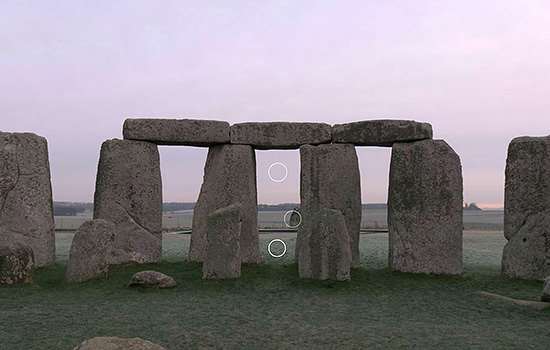
Virtual Tour of Stonehenge
Take an interactive tour of Stonehenge with this 360 degree view from inside the stones, which explores the monument’s key features.
-
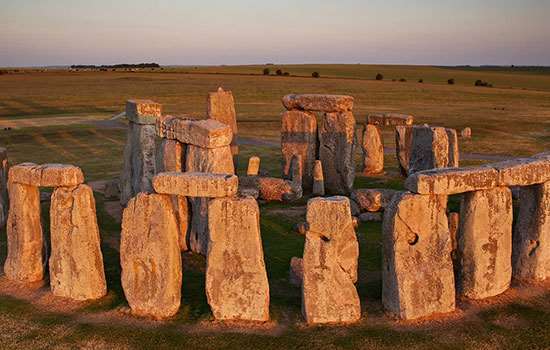
History of Stonehenge
Read a full history of one of the world’s most famous prehistoric monuments, from its origins about 5,000 years ago to the 21st century.
-
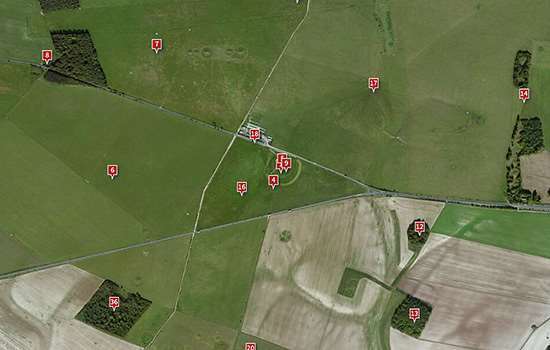
The Stonehenge World Heritage Site Landscape
Explore this interactive map created by Historic England to find out about the latest in-depth research into the Stonehenge World Heritage Site landscape.
-
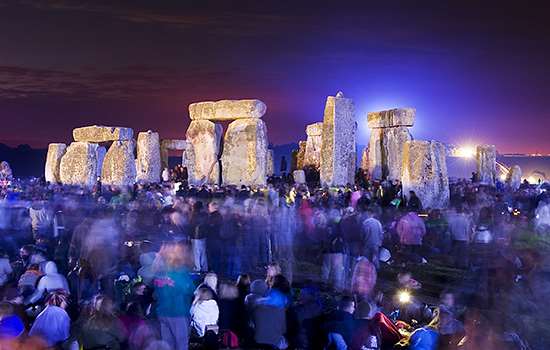
Why Does Stonehenge Matter?
Stonehenge is a unique prehistoric monument, lying at the centre of an outstandingly rich archaeological landscape. It is an extraordinary source for the study of prehistory.
-
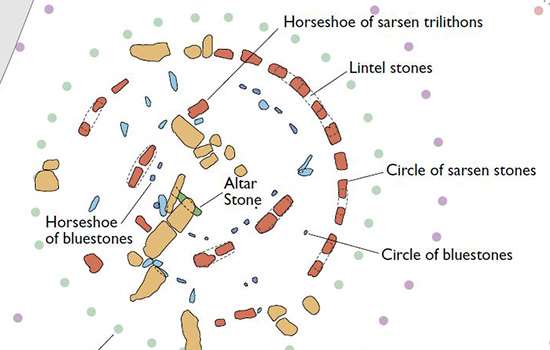
Plan of Stonehenge
Download this PDF plan to see the phases of the building of Stonehenge, from the first earthwork to the arrangement of the bluestones.
-
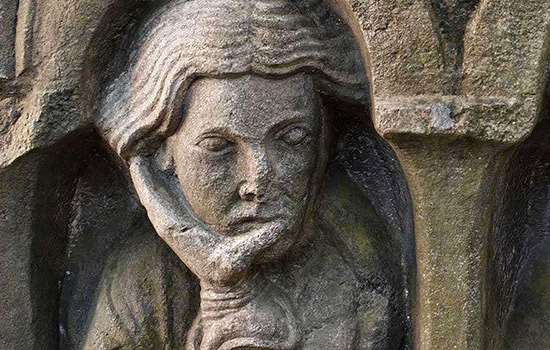
More histories
Delve into our history pages to discover more about our sites, how they have changed over time, and who made them what they are today.
